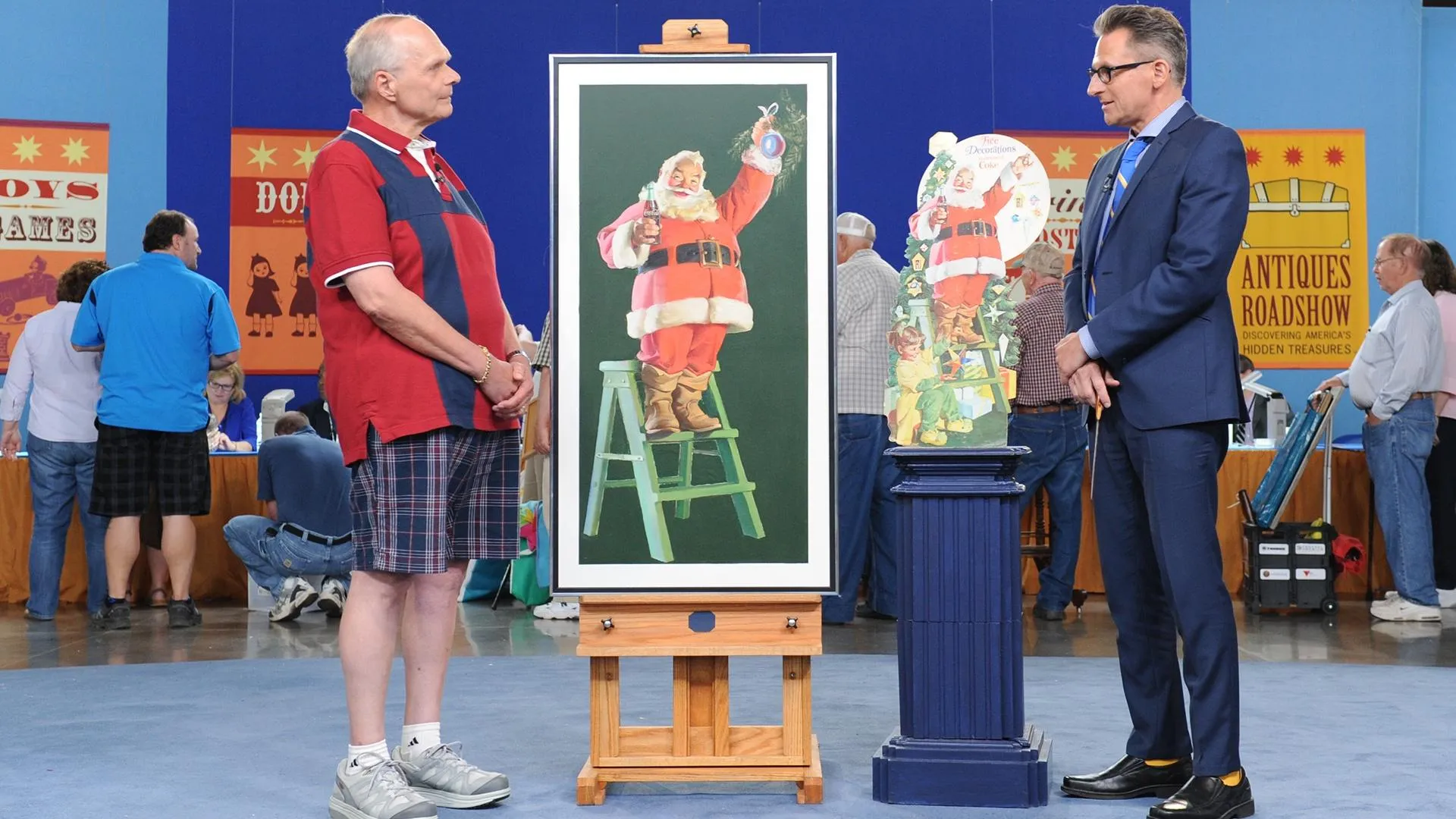HOST: The State Historical Society of North Dakota has a considerable collection of works by a Hunkpapa leader, Joseph No Two Horns. The collection includes dozens of colorful drawings called pictographs that illustrate events from the artist's life. ROADSHOW expert Ted Trotta was excited to see so many wonderful examples of No Two Horns' work.
APPRAISER: Joseph No Two Horns' muse, if you will, was his days as a youthful warrior, and this is what he recollected over and over again with accuracy. We believe that Joseph No Two Horns was born around 1852. He lived a long life; he passed away in 1942. He was 14 years old on his first war party. By the time of the Battle of the Little Big Horn, he was a mature warrior, and Joseph No Two Horns went on to become a working artist recollecting that great moment in their tribal history.
HOST: There's a pictograph here, one of his pictographs you've chosen for us to look at. Tell me about this piece.
APPRAISER: This is the epic moment in Joseph No Two Horns' life. He's at the battle, his horse is wounded, his favorite horse, a grey roan. The horse falls, he falls with it. He's carrying a horse quirt with a saw-tooth design. This signifies that he's a member of the Kit Fox society, a warrior society, a great honor. Also a tremendous responsibility. If he falls or his comrade falls in battle, he takes his lance and pounds it into the ground and there's no retreat. He fights to the death to protect himself or his comrade.
HOST: In this case, we see what appears to be the shield depicted in the pictograph, but this is actually a replica of the one he probably brought into battle, but created by him.
APPRAISER: Created by him. This was a shield conceived in a vision. In this case, it depicts a thunderbird, the highest power of the avian world. A ferocious predator would both enable and protect him as a warrior.
HOST: And then if you look closer, I see a drawing of a flower, but that has nothing to do with No Two Horns, does it?
APPRAISER: It's a very pretty flower, but it has absolutely nothing to do with No Two Horns. In the early days, in the 1860s, 1870s, a cavalry officer might have provided No Two Horns or another Plains artist with a ledger book, a lined ledger book. In this case, maybe 20, 30 years after that moment, scraps of paper were being utilized.
HOST: So in the world of ledger art and pictographs like the ones we're showing today, what would be a comparable value?
APPRAISER: They're extremely desirable, and there are a few factors that would play into this. A good ledger drawing, aesthetically pleasing, that perhaps depicts some accoutrements, in good condition would be worth an average of, say, $2,500, $3,500. An exceptional example could be worth quite a bit more. In the case of Joseph No Two Horns' work, if we were to find something like this in a retail setting, I believe these would sell for $15,000 to $20,000. This has a great deal to do with the artist, the fact that we know who depicted this great work.
HOST: It's always amazing to hear the story and the history of the pieces that we're talking about, but to be standing next to the actual pieces. Thank you so much for sharing them with us.
APRPAISER: Mark, thank you very much for having me.











